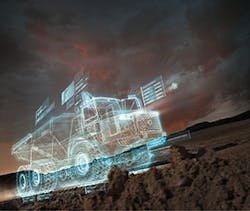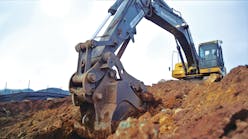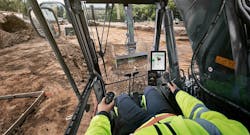Telematics systems are no longer novelties. Grading and excavation contractors have long relied on these systems to provide them with important data about how much fuel their construction vehicles are consuming, how much time their machines have spent idling at job sites, and how many work hours they’ve logged.
Those contractors who operate sizable fleets of graders, excavators, and other vehicles all manufactured by the same company can easily log onto a single portal to access this information from all of their telematics-equipped machines.
But those contractors whose fleet is made up of vehicles from several different manufacturers? Accessing the telematics data from their equipment becomes more of a challenge. That’s because contractors have to log onto one website to pull telematics data from their Caterpillar machines, another to get it from their Volvo vehicles, and yet another to access information from their John Deere graders and excavators.
Fortunately, telematics experts say that the first steps to resolving this problem have already been taken. Two key trade organizations—the Association of Equipment Manufacturers and Association of Equipment Management Professionals—have made a draft version of a new application programming interface (API) available for download.
This new standard—the API standard version 2.0—allows contractors to access telematics data from one single log-in website, even if their fleet includes vehicles made by several different manufacturers.
A Needed Change
Critical. That’s the word Nick Redd uses to describe how important the API standard version 2.0 will be to contractors. Thanks to this standard, contractors and machine operators will now be able to tap the full value of their machines’ telematic systems, says Redd, marketing supervisor for Caterpillar Inc.
“As customers look to manage their fleets, they want to do it from one system,” says Redd. “They want to manage everything on the job site with a single solution. The ability to get data from all assets regardless of manufacturer is really a foundational element for effectively managing a job site.”
JCB’s LiveLink uses the API standard version 2.0. JCB’s LiveLink uses the API standard version 2.0.
And that, at its most basic, is what the new API standard is designed to do. The goal is to make it as easy as possible for customers to access and manage important information about how all their machines—no matter who manufactures them—are operating. But that’s only part of the mission. The new API standard will also make it easier for the manufacturers of telematics technology to make this key operational data available to end users.
Redd says that the challenge today is that the makers of telematics systems offer their own applications that allow their customers to access data about how much fuel their machines are burning, how long they’ve been idling, or how much dirt they’ve moved. Contractors who run machines made by a variety of manufacturers have to mine this data, then, from several different applications.
Redd says that this is inefficient, and that end users are tired of jumping from app to app to determine how efficiently their machines and their entire job sites are operating.
The new API standard will allow end users to pull data from manufacturer A, B, and C from one single application.
“The contractors don’t want to deal with inefficiency any longer,” says Redd. “And the new standard will help eliminate the inefficiency that exists today.”
The Association of Equipment Manufacturers and the Association of Equipment Management Professionals already have some experience in crafting an API standard for telematics. Since 2011, the associations have offered version 1—and then, later, version 1.2—of such a standard.
Those earlier standards, though, were not complete solutions, mainly because they only cover the most basic of data: information such as a machine’s location, the hours it worked, the numbers on its odometer, and the amount of fuel it consumed.
Version 2.0 of the API standard—the draft version of which the associations just recently made available to contractors and other end users—is a step forward. As Redd says, it makes 19 different data points available to users. Let me point out one of the most important of the new additions. Version 2.0 of the API standard includes idle time, which will allow operators to determine how long the machines on their job sites have been idling no matter how many different manufacturers’ graders and excavators they are using.
Idling time, of course, is important. The longer heavy equipment sits idling without actually working, the less revenue the machines generate, costing contractors money. If contractors can quickly determine which machines on which job sites are spending too much time idling instead of working, they can make better decisions about where to place these machines. They can then send graders or excavators to those job sites on which they’re most needed and on which they won’t be spending as much time idling.
The availability of the draft version 2.0, though, doesn’t mean that the telematics industry will stop evolving. The version available now by the associations remains a draft version, so changes will probably be made to it.
And even once version 2.0 of the API standard (end users can find the draft standard at http://bit.ly/1V8sOCQ) is tweaked, much work will still need to be done to boost the efficiency of telematics systems.
Redd says that today there is no process to determine which manufacturers are adhering to the API standard. To help address this issue the goal is for the API standard version 2.0 to become part of the ISO.
“We want a process that will make sure that those who say they support the standard do actually support it in every detail so that it is as easy to work with as possible,” says Redd.
Redd says that the goal of the Association of Equipment Manufacturers and Association of Equipment Management Professionals is to have the latest API standard become part of the ISO process by the end of 2015. He says that work is moving along on track to hit this deadline.
But even once that occurs, it will be up to the manufacturers of telematics equipment to make data from their machines available to customers.
“Once we have the standard in place, it’s just that,” says Redd. “It’s a standard. Customers won’t have the opportunity to leverage the benefits it can provide until the manufacturers support it within their telematics systems. There will likely be a lag from the time the standard is officially released until there is a critical mass of manufacturers supporting it. However, once they do, customers will be able to take advantage of it immediately.”
The ability to monitor idle-time data from several different manufacturers’ machines from one application is the most important benefit of the new standard, says Redd.
If contractors discover that a machine on one job site is spending 80% of its time idling, they can move that vehicle to a second job site where it can be more active.
Redd says that he doesn’t think contractors will take too long to adapt to the new standard. Contractors have already discovered the benefits of telematics, he says.
“This technology is already installed in most of the vehicles in their fleets already,” says Redd. “They are hearing the same success stories of other contractors who are using telematics to work more efficiently. They have already been educating themselves on how beneficial this data can be for them. There will be a learning curve, but I don’t expect it to be a long one.”










